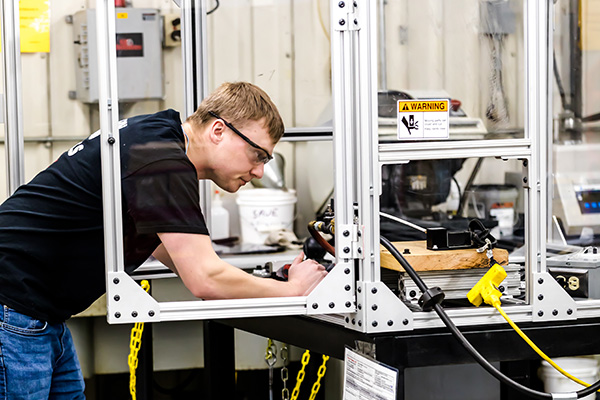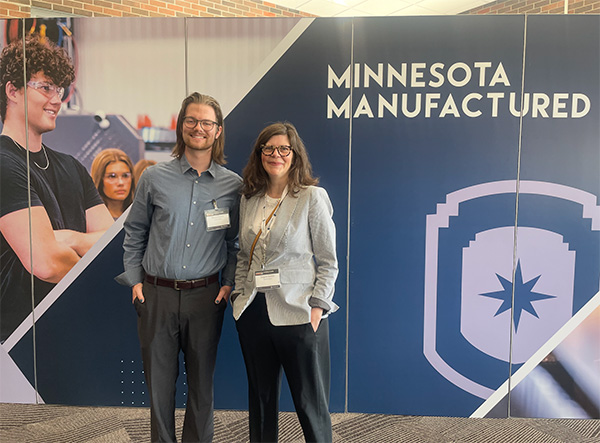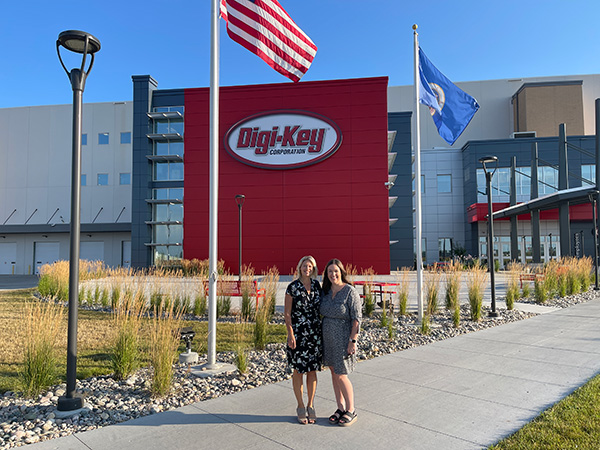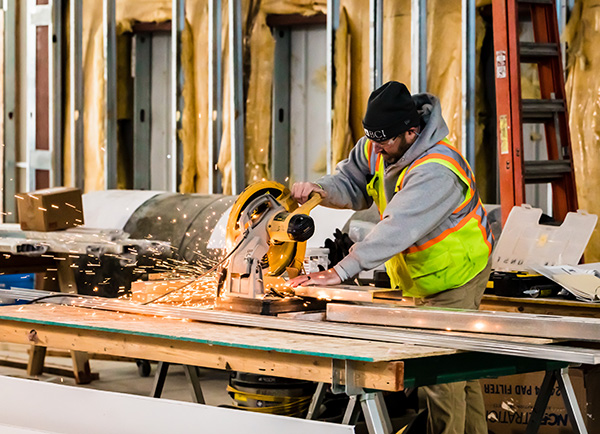A guide to leading manufacturing companies through 2025’s rapid change with empathy, clarity and trust-centered communication.

By Breanna Welke, Vice President & Change Management Lead, Bellmont Partners
Manufacturing companies across North America are no strangers to change, but 2025 has pushed even the most resilient teams to their limits. Geopolitical tensions, supply chain disruptions and the rapid evolution of AI and automation are transforming the industry at a breakneck pace. Internally, companies are also navigating return-to-office policies, workforce restructuring and shifting employee expectations.
Change fatigue is real—and it’s impacting employee engagement, retention and productivity. In this environment, communication leaders must go beyond crisis response or campaign planning. They must lead with empathy, prioritize transparency and use internal and external communications as tools to manage the emotional side of change thoughtfully and effectively.
As a vice president at Bellmont Partners, I’ve helped guide manufacturing clients through some of their most challenging transitions. And the through line in every success story? Communication that centers around the employee builds trust from the inside out.
Before focusing efforts on external communications, make sure your people feel seen, informed and valued through internal communications. Employees don’t expect leadership to have all the answers, but they do expect honesty and direction—especially when their day-to-day experience is in flux.
Acknowledging uncertainty—whether about shifting roles, economic pressures or industry trends—goes a long way toward reducing speculation and fear. Silence breeds anxiety. On the other hand, even a simple message like, “We’re paying attention and we’ll keep you informed,” can provide much-needed reassurance.
Change management isn’t a one-time announcement. It’s a consistent rhythm of internal communication that explains what’s happening, why it matters and how it affects the team. Whether you’re transitioning to a new software platform or reshaping business strategy, the emotional impact on employees is real. People process change not just cognitively, but emotionally—especially when they’re navigating change at home too.
Even if your manufacturing company doesn’t interact directly with consumers, the way you show up online and in public matters—especially during times of change. When uncertainty is high, stakeholders look for signs of consistency, credibility and leadership. A strong, steady external presence helps reinforce that your company is not just reacting to change but guiding it.
This is where your digital footprint becomes more than just a marketing tool—it’s a trust-building asset. Maintaining an updated, polished website and sharing regular updates on social media sends a clear signal: “We’re here, we’re evolving and we’re engaged.” For younger generations entering the workforce or prospective partners evaluating your brand, an active digital presence conveys confidence, professionalism and forward momentum.
More importantly, your digital content can provide reassurance during turbulent times. Sharing leadership perspectives, celebrating employee milestones or highlighting community involvement helps ground your narrative in authenticity. These stories not only show resilience but remind both internal and external audiences that the company’s core values remain intact—even as other things shift.
Content doesn’t need to be constant, but it should be intentional. Repurposing material—like turning a media placement into a social post or a blog into a newsletter—can stretch your reach without overwhelming your team. A thoughtful content cadence ensures your key stakeholders continue to hear from you even when your internal resources are focused on navigating change.
Finally, a proactive digital strategy also acts as reputation insurance. If your company encounters negative press or internal challenges, a strong library of positive, values-based content can provide critical balance and context.

For manufacturers navigating change, consistency across all channels—including trade media—is critical. Yet many companies only engage with media when there’s a press release to pitch. In 2025, a smarter strategy is to treat industry publications and trade reporters as long-term partners in your change journey.
Instead of waiting for the “perfect story,” offer insights on industry trends, thought leadership from executives or lessons learned from recent transitions—even those that didn’t go as planned. Reporters value transparency and context and your willingness to share what you’re learning through change will position your company as a credible, human voice in the field.
Trade shows are also back in full force—and they’re not just for showcasing products anymore. These events offer a vital space for face-to-face relationship building with media, customers and industry peers. Use them to articulate how your company is adapting, innovating or evolving—and invite others into that story.

For manufacturers, especially those in smaller towns or rural areas, the local community isn’t just your talent pool—it’s part of your reputation. During periods of change, staying visible, transparent and actively engaged in your region pays dividends both in recruitment and long-term loyalty.
Telling your story through local media helps shape public perception and reassure current and prospective employees. And beyond PR, authentic partnerships with schools, workforce agencies and community organizations show that your company is investing not just in its own future, but in the future of the community it calls home.
When employees see that their employer is respected locally and contributing meaningfully, it reinforces their own sense of purpose and stability.
Use this quick gut check to evaluate how well your organization is communicating change:
If you answered “no” to more than one of these, it’s time to pause and realign. Change isn’t just operational—it’s deeply personal. Your communication strategy should reflect that.

In an era defined by transformation, the manufacturers that rise above won’t be the ones who simply adapt—they’ll be the ones who lead. And leadership today means more than operational agility. It requires emotional intelligence, empathy and communication that goes beyond logistics to acknowledge the human side of change.
Strong internal communications help employees feel included and prepared. A consistent digital presence reassures stakeholders and bolsters reputation. Trade media relationships and community partnerships extend your message and build trust in every direction.
But at the center of it all is this: employees are people first. They’re experiencing change not just at work, but in every part of their lives. Leaders who recognize the emotional weight of change—and who commit to communicating with clarity and care—will not only weather 2025’s volatility but come out stronger, more aligned and more trusted than ever before.
Because in manufacturing, where perception shapes partnerships and people power production, leading through change isn’t optional—it’s the strategy.
About the Author:
Breanna Welke has spent the past 20+ years developing and implementing successful communications strategies across a wide variety of industries in both agency and corporate settings. With extensive experience in strategy, positioning, messaging and crisis communications, she has led the development and implementation of a wide variety of award-winning public relations programs for well-known brands such as SC Johnson, Unilever, General Mills, Midwest Dairy, Marvin Windows and Doors, Renewal by Andersen and Malco Tools.
In addition to consulting with all of Bellmont Partners clients on strategy, Breanna has helped numerous clients navigate complex business issues through the development and execution of change management and crisis communications plans for both internal and external audiences. With a special focus in Manufacturing, Breanna helps clients in these industries tell their stories in a way that resonates with audiences that matter most, delivering maximum results.
Read more from the author:
Struggling with Content Overload? Five Helpful Reminders to Get Your Content Marketing Plan Back on Track. | Bellmont Partners, 4/14/2025
4 Communications Tips for Manufacturing Companies | Bellmont Partners, 2/22/2025
In this episode, I sat down with Beejan Giga, Director | Partner and Caleb Emerson, Senior Results Manager at Carpedia International. We discussed the insights behind their recent Industry Today article, “Thinking Three Moves Ahead” and together we explored how manufacturers can plan more strategically, align with their suppliers, and build the operational discipline needed to support intentional, sustainable growth. It was a conversation packed with practical perspectives on navigating a fast-changing industry landscape.